Kuramae Shrine is located a 3-minute walk from Kuramae Station on the Toei Subway Oedo and Asakusa lines. Although a small shrine located in a residential area, it has recently become a very popular spot with the arrival of spring.
Very popular spot in spring
Japan has four seasons, and among them, spring is very popular. This is as a place where we can learn about spring, which everyone is looking forward to, through the blooming of flowers. That is why it is so crowded.
There are plum blossoms just beside the torii gate, cherry blossoms in the foreground on the left, and mimosa on the left. All are in full bloom and stunning!
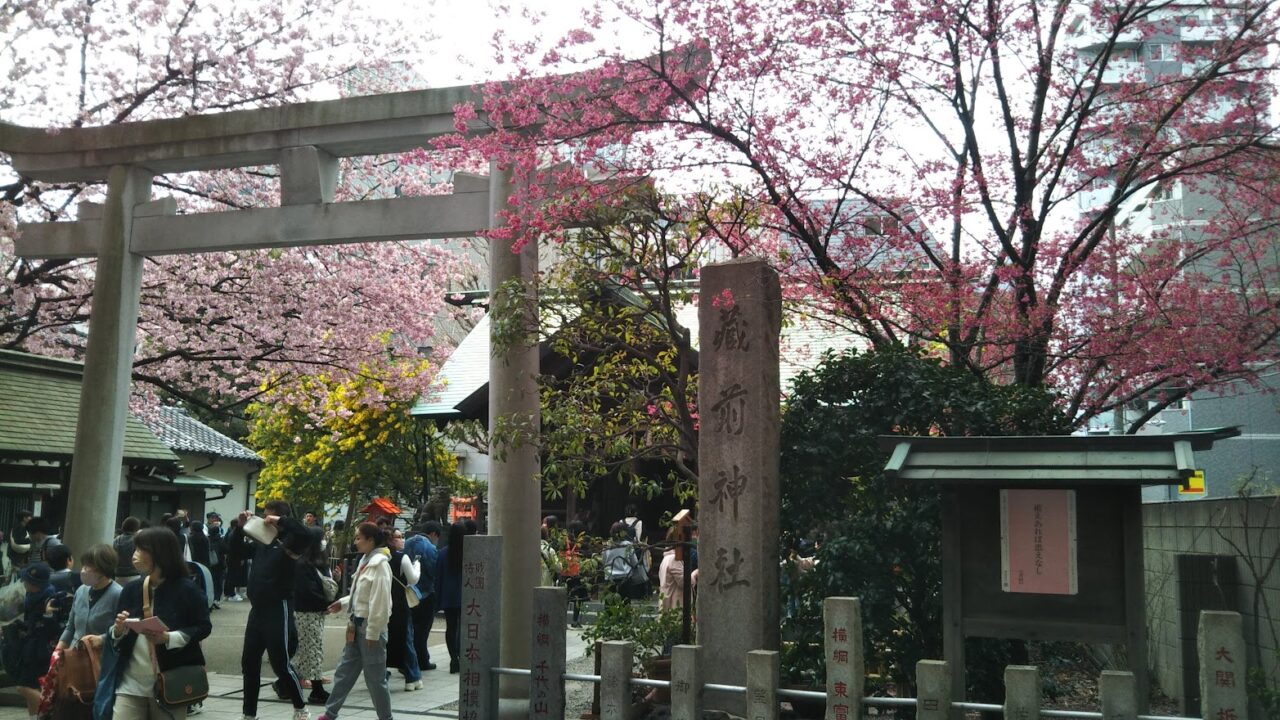
Plum, mimosa, and cherry blossoms
The bright yellow of mimosa is wonderful. It is called the “flower of happiness” in Europe because of its vivid blooms as spring arrives. I recently learned that the flower symbolizes International Women’s Day on March 8.
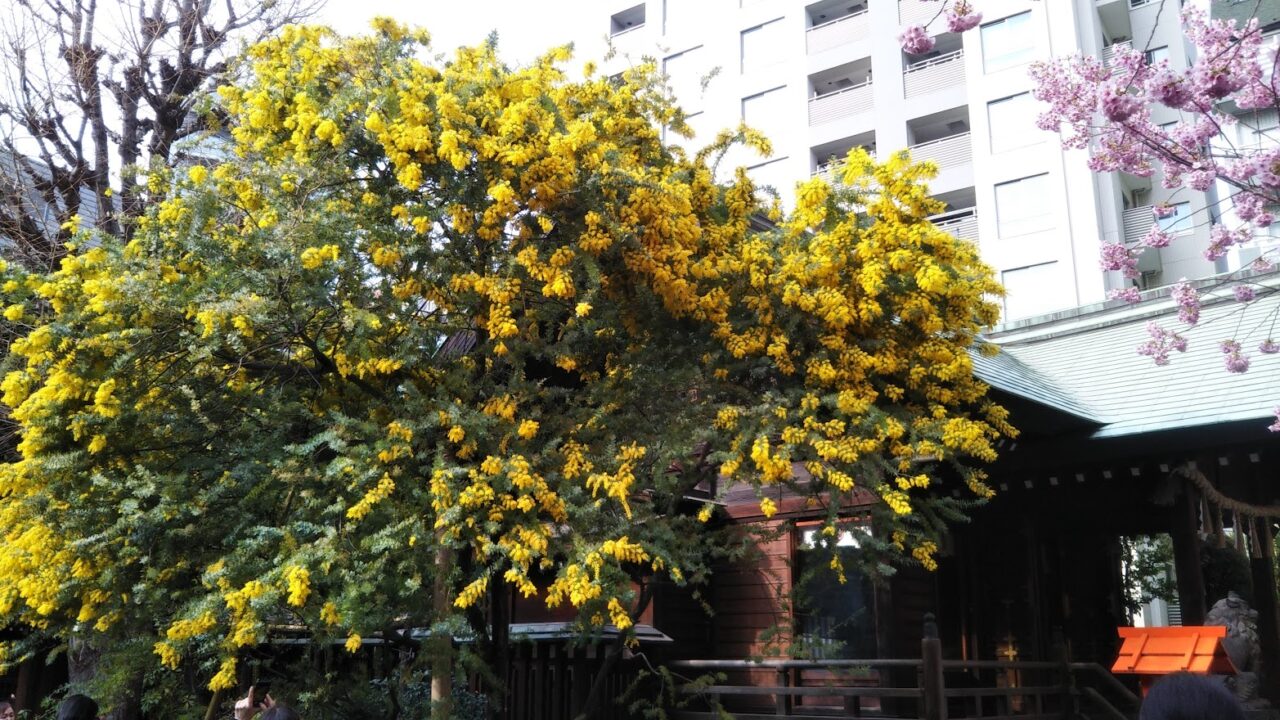
I thought it was an unusual combination with cherry blossoms, partly because it is a tree that is not often seen in shrines.
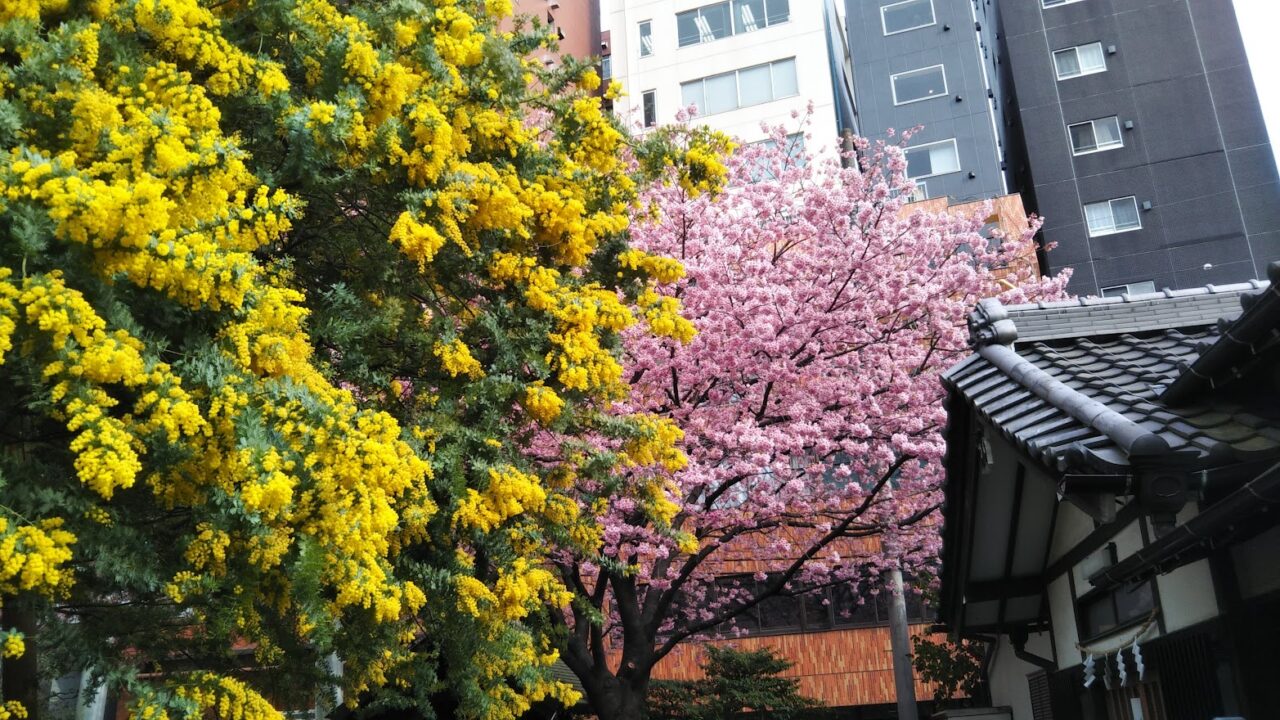
And if you change your line of sight, you can see plum blossoms and cherry blossoms.
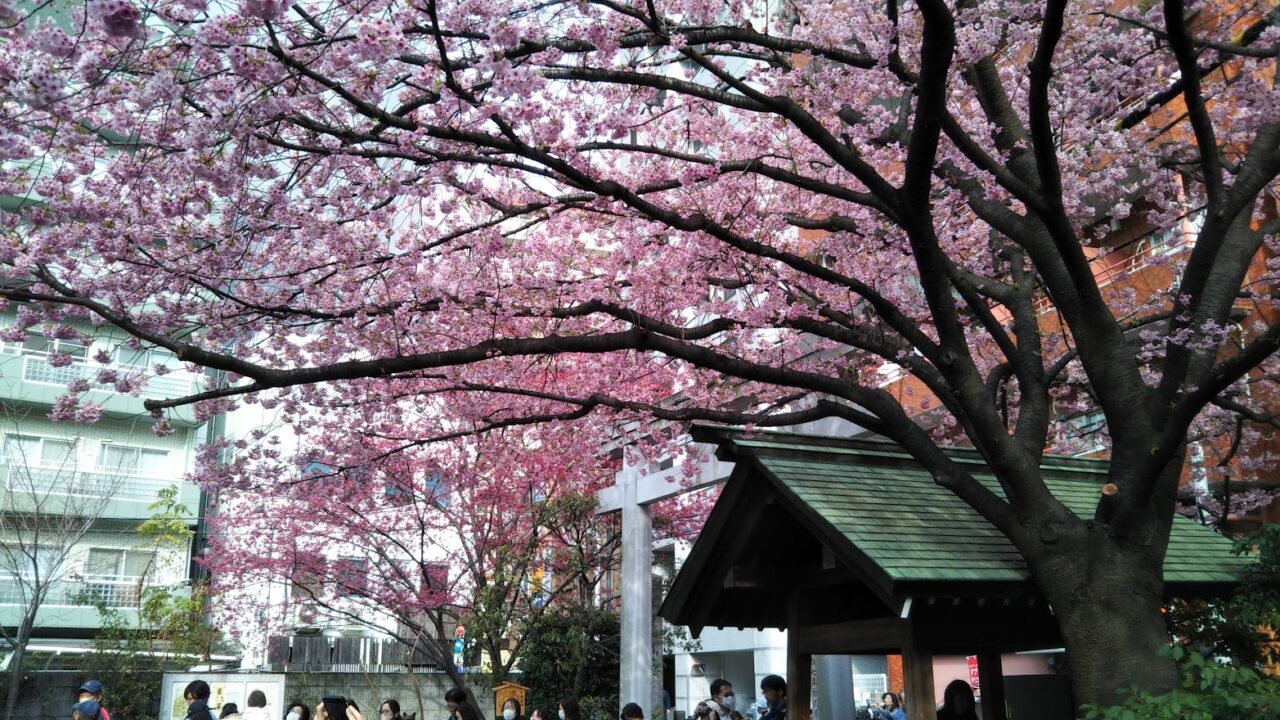
A Shrine with a Long History
The shrine was founded in 1693 when Tsunayoshi Tokugawa invited Ishimizu Hachiman-gu Shrine to build the shrine, and the shrine space used to be six times larger than the present site. After the Great Kanto Earthquake and the war, the shrine space became the small and compact.
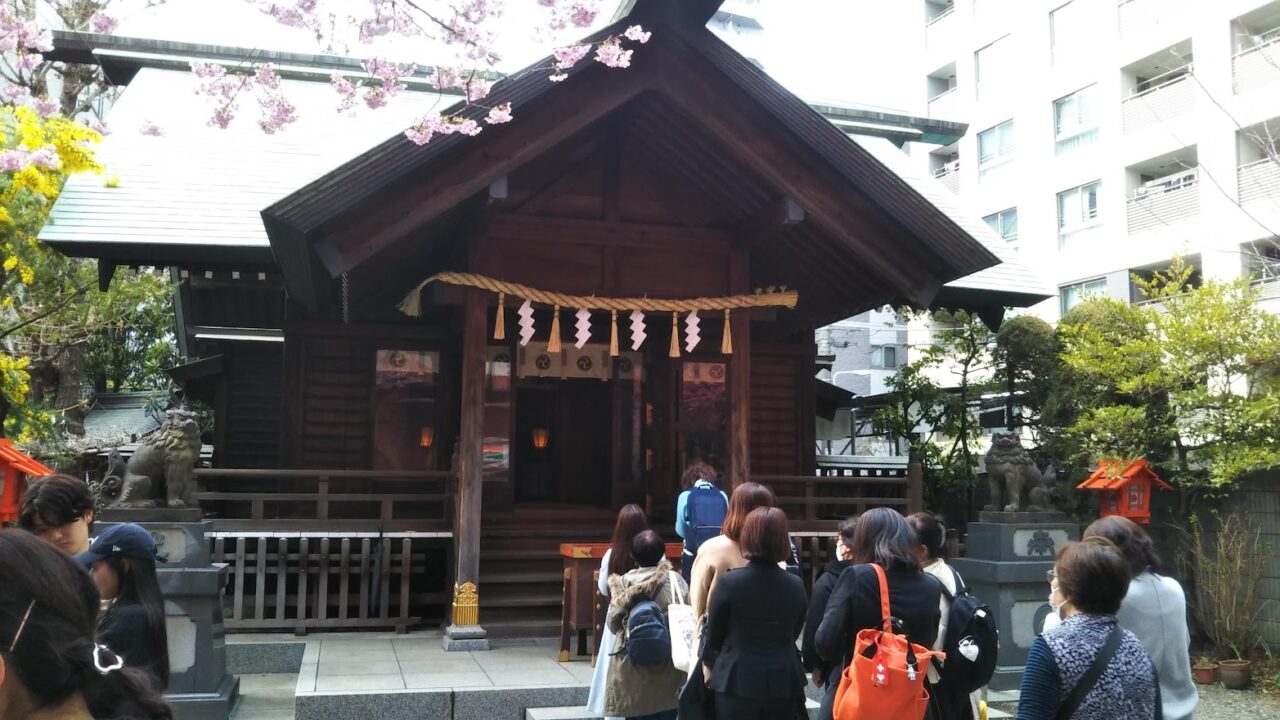
Located amidst a row of apartment housings, I thought it was a very Tokyo-like place.
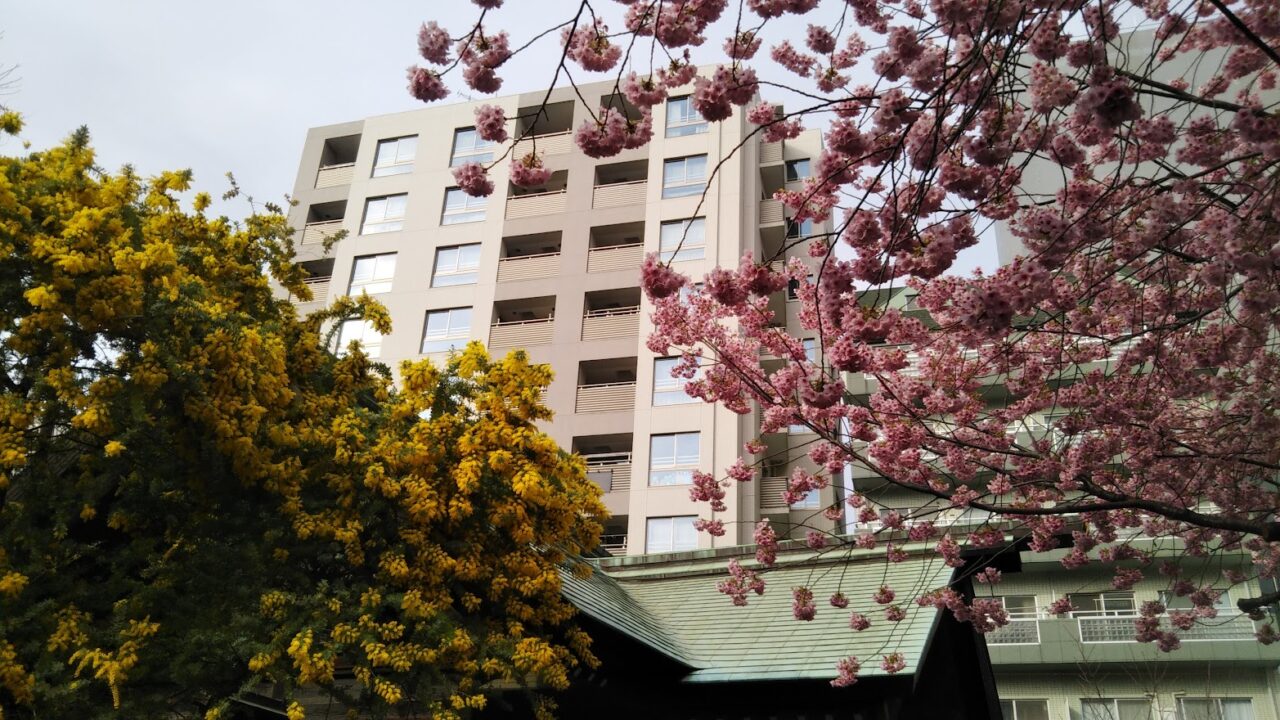
Shrines associated with classical Rakugo
There is another spot you can enjoy when you visit during other seasons. Kuramae Shrine has a small bronze statue of a dog on its grounds, as it was the setting of the classic rakugo story “Moto-Inu. The story of Moto-Inu is about a white dog who wants to become a human and visits the Meguro Fudo shrine to pray for 100 times to become a human, and his wish comes true and he becomes a human. However, the habit of being a dog is still stuck in him and he fails to become a human.
Kuramae Shrine is also said to be the birthplace of sumo, and there is a nishikie of “chikara-mochi” painted by Kuniyasu Utagawa.
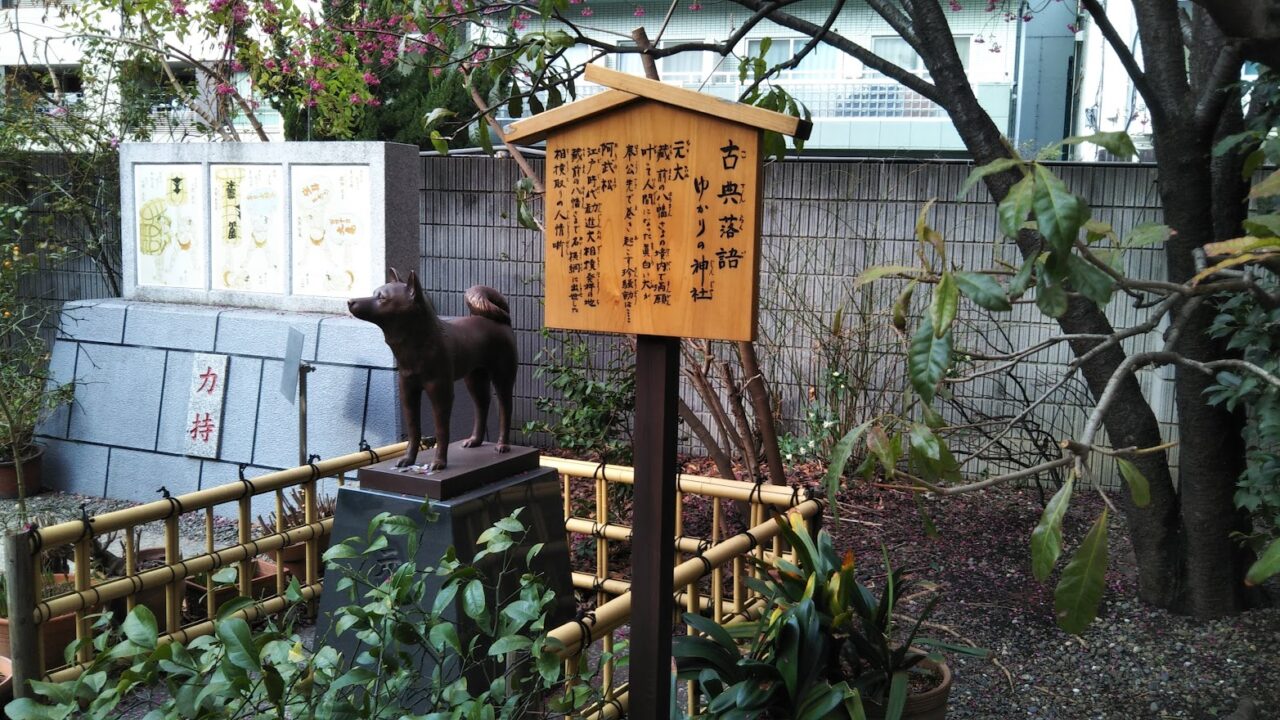
Kuramae Shrine is only a 10-minute walk from Sensoji Temple and Kaminarimon. If you are planning to explore the Asakusa area, it is recommended to extend your visit. Especially in spring, they will surely be delighted.
Stay tuned for more updates of Japan. See you soon!
Click here for more.
3-14-11, Kuramae, Taito, Tokyo
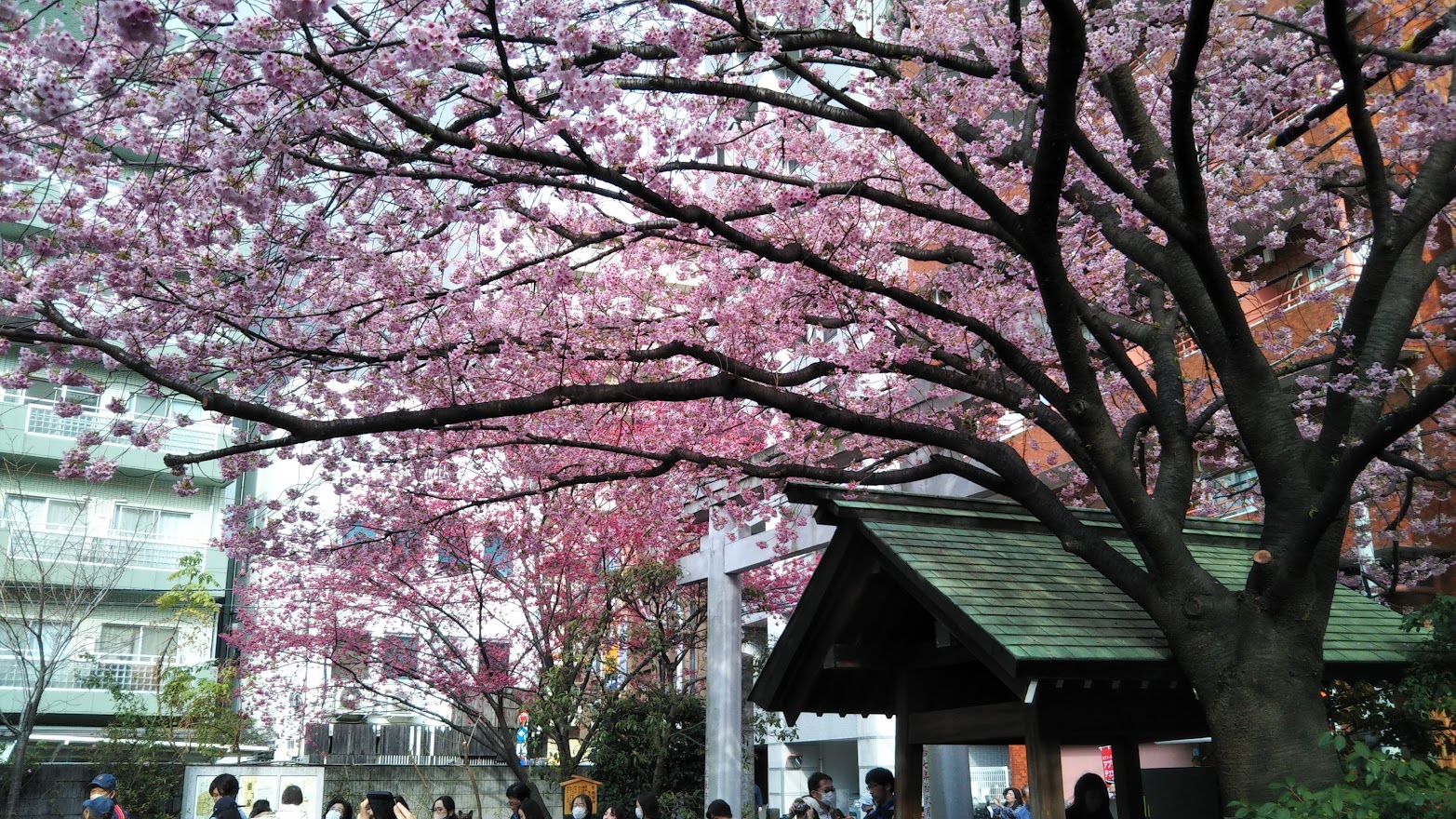
コメント